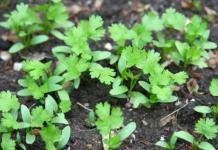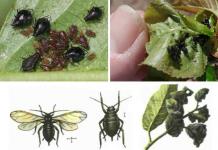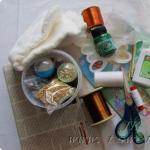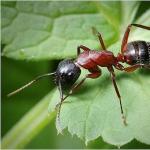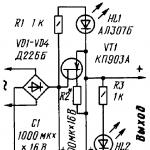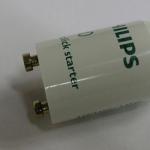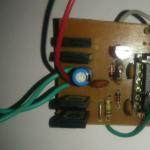Master class flowers made of fabric.
White rose without special tools. Corrugated.
Making a flower from fabric is easy. Enough desire and imagination.
For this flower we will need (photo 1):

Fabric (white chiffon), approximately 50x40cm. Gelatinize.
Regular white threads
Batik fabric paints green and yellow
Scissors, pliers (wire cutters)
PVA glue (dries transparent), if you have a glue gun
Wire. Not too thin, thicker than telephone wire. Can be wound from old transformers.
Cardboard for patterns
Sharpened pencil
Corrugated paper white
Thick gauze or handkerchief, or a piece of similar fabric
Newspapers (for drying after dyeing, preferably black and white)
Awl or needle
Beads or other additions as desired. Feather. Veil.
We take cardboard. We need several sizes of petals, a leaf and a backing. Depending on the size of the desired flower, the number of petals can be varied. Make them larger, or vice versa. I will make 5 sizes of petals, for this we draw crosses (photo 2):

No. 1 – 3cm (length), 2.6cm (width) – 2-4 pieces
No. 2 – 3.5cm X 3cm – 2-4pcs
No. 3 – 4cm X 3.6cm – 3pcs
No. 4 – 4.5cm X 4cm – 4-5pcs
No. 5 – 5cm X 4.6cm – 4-5pcs
No. 6 – leaf 4 cm X 2.8(3) cm - 8 pcs.
We draw crosses with an offset middle, form them into petals and a leaf from No. 6. The leaf teeth and backing are cut out on the fabric after dyeing. On the patterns we immediately mark the number of pieces and the number. When cutting out and drawing a pattern of petals, remember that the number of petals must be multiplied by the number of desired flowers, plus buds
(2 pieces No. 1, 2 pieces No. 2, 1 piece No. 3). (Photo 3)

No. 7 – circle with a diameter of approximately 5.5 cm for gluing
From the center of the circle we draw teeth resembling flames, about 5 pieces. The number of pieces is equal to the number of flowers plus buds. (Photo 4)

You should get patterns like this. (Photo 5)

Now you can start cutting the pattern on the fabric. You can read how to gelatinize fabric separately on my website. It's simple. It is important to remember that the patterns must be placed strictly diagonally, that is, at an angle of 45 degrees. (Photo 6)

I couldn’t resist cutting out the teeth of the leaves right away, but I shouldn’t glue them, otherwise it would be awkward to work with. (Photo 7)

Do not throw away small scraps; these are good samples for coloring. Organize your patterns by size to avoid confusion.
Coloring. To give the flower a natural look, we need to shade the middle and color the leaves, underlays and later the letons. To do this, pour some water into a saucer and drip yellow paint. Let's try it on a sample. The color should be moderately intense, as we will dilute it later. (Photo 8)

Let's do a test. (Photo 9)

I take petals No. 1 with tweezers, dip them one at a time in paint and lay them out on newspaper. Once the paint is absorbed, I transfer it to a dry place (so as not to stick). (Photo 10)

Add some water. Let's try. Dipping petals No. 2. Then dilute it to a pale yellow color and dip No. 3.
Add green paint to the remaining paint. Until a noble pale green color is achieved, so that the composition is in the same color scheme (closer to white) and is not colorful. We repeat the procedure with leaves No. 6 and adhesives No. 7.
Pour the remaining paint into a separate clean jar. Useful for coloring letons. This is what should happen. (Photo 11)

When everything is dry, you can start cutting out the backing and corrugating. Take gauze (or a handkerchief), fold the petal in half (photo 12), fold the gauze diagonally, like a scarf, and place the petal in the fold, fold to fold. (Photo 13, 14) Using the palm of your left hand, press the piece of gauze to the table, with your right hand we take the end of the gauze and move it clockwise, twisting it a little (photo 15, 16), but do not overdo it.





Let's see what happened. (photo 17) And so on all the petals and leaves. If the leaves stretch out too much after corrugation, try folding the gauze along the longitudinal thread. You can try it on a piece of gelatinized cloth so as not to spoil the workpiece.


We prepare letons in advance. How to make them is described on my website. (Photo 19,20,21)



Now let's start assembling the flowers. Take the leton and bend the tip about 1 cm (photo 22) so that the future flower holds tightly to it

We take the smallest petal (No. 1), wrap it around a loop previously coated with PVA glue (photo 23) and graft it at the bottom with thread or thin wire. I took the thread.

Afterwards, alternately with a slight overlap we graft the remaining ones No. 1, No. 2 and No. 3. (Photo 24) If this is a bud, then we’ll stop there.

If it's a flower, continue. Just to add naturalness and pliability, we curl the remaining petals with a toothpick (photo 25,26).

Satin ribbon flower
Master class with step-by-step photographs: How to make a flower from a satin ribbon with your own hands.
1. Take a ribbon 4 cm wide. Cut 5 pieces of ribbon 7.5 cm long and 5 pieces of ribbon 9 cm long. Lightly singe the edges.
2. Fold one piece of tape in half. We sew small stitches along the open cuts, departing 2-3 mm from the cut. The thread should be the same color as the ribbon.

3. We tighten it.

4. Without breaking the thread, sew a second piece of ribbon of the same length. In this way we collect 5 pieces of the same length for one thread. We tighten it.

5. Connect in a circle.

6. We do the same with blanks of a different size. Assemble the flower using glue or a glue gun. I used a button as the center. This flower has a very neat center and you don’t have to glue the button, but simply sew it on.

7. Cover the wrong side with a circle of felt (glued with a glue gun). The reverse side can be covered with a circle of cardboard covered with fabric. You can also cut a circle from a plastic bottle and cover it with fabric.

Using this flower you can make an elastic band, a brooch, or decorate a headband with it.

This flower is made from pieces of satin ribbon 8 cm and 9.5 cm long.

Rep ribbon flower
Cut the ribbon into pieces of equal length. Here I got pieces 7.5 cm long. We singe the sections with a lighter (match or candle) so that they do not unravel.

Fold it as shown in the photo.


Fold it so that all 4 corners are together.

Secure with a needle and thread.


Without breaking the thread, we collect the remaining petals in the same way.

Connect in a circle. And I once again pass the needle and thread in a circle to secure it more firmly.

I bring the needle to the wrong side and stitch there in a circle.

I'm sewing on a button. The middle can be decorated with sewn rhinestones, etc.

I sew an elastic band on the inside.

Satin ribbon rose
Master class with step-by-step photographs: How to make a rose from a satin ribbon with your own hands.
1. Satin ribbon 5 cm wide. This rose took 75 cm long. I singed the edges, but this is not necessary.

2. Fold the edge of the ribbon to the wrong side like this.

3. We begin to twist the corner.



4. Fix the twisted corner (the middle of the rose) with thread.

5. Bend the tape so that one edge of the tape runs along the other edge.


6. Bend along the line of contact of the edges of the tape.


7. Sew along the edge with a “forward needle” seam.



8. We bend the tape again so that one edge of the tape runs along the other edge.

9. Bend along the line of contact of the edges of the tape.

10. Sew along the edge with a “forward needle” seam.

11. And so we repeat until the end of the tape.

12. End of tape.

13. It turns out like this “spiral”.

14. Lightly tighten the seam, evenly distributing the folds.

15. The middle of the bud begins to curl on its own.

16. We begin to twist the bud, fixing each layer with thread or a glue gun.


The type of bud depends on how rigid the tape is, how tightly it was pulled and how tightly the layers are laid.
The tape I have here is quite stiff, it was pulled tight and the layers were not laid tightly.

Making leaves. I also made the leaves from ribbon 5 cm wide - there was no other suitable color.





View from the inside.



I glued the leaves with a glue gun. I covered the underside of the rose with a round piece of felt and also glued it with a glue gun. I glued it with a glue gun and a rubber band.


For a rose with a smaller diameter, 65 cm of satin ribbon was used and it was twisted more tightly. The tape itself is also softer.

Ribbon rose
In order to create such cute roses you will need very little time. They are very easy to implement and, best of all, do not require large financial outlays. It took me less than 10 rubles to make one such ring: 5 rubles for the blank for the ring and 2.5 rubles for the braid.
The roses are made from zig-zag braid (this braid is also called “snake” or “bindweed”).
For the large rose I used 50 cm of braid, for the smaller one - 46 cm.
Master class: Rose from braid
So we will need:
- snake braid
- threads in the color of the braid
- needle
- scissors
- lighter or matches
- glue gun or other suitable glue
1. Cut the braid to the required length.

2. Fold in half.

3. We intertwine (twist) the parts of the braid with each other.


4. Weaved to the end.

5. Carefully trim the ends of the braid and singe them with a lighter.

6. We begin to twist the bud and stitch it with thread on one side (the bottom of the rose or the wrong side). It is better to take the threads to match the braid - this way the work will look neater. For the master class, a contrasting thread was used for clarity.


7. Straighten the rose petals, slightly bending the outer layers.

8. The braid rose is ready.

In order to make a ring, we take a ring blank with a round platform.

Glue the ring blank to the rosette using a glue gun.


Fabric Circle Flower: Carnation
1. Cut out a template from cardboard - I have a circle with a diameter of 6.5 cm. Take a piece of synthetic fabric (the fabric should melt well over the fire). Cut out 12 circles from fabric.

2. We burn the edge of the circle over the candle in small sections and immediately, before it cools down, bend it in different directions (toward and away from ourselves). The edges of the circles are wavy.

3. Take one circle of fabric and fold it in half.

4. Then put it in half again.

5. Secure the corner with thread. We do this with all circles.

6. Cut out a circle from felt. We make leaves from fabric (I used green satin ribbon). We begin to glue the blanks with a glue gun. First, I glued two circles to determine the size of the leaves. Then I glued the leaves and continued gluing the prepared circles.

The first layer takes 4 circles. We glue the second and third layers of circles in a checkerboard pattern in relation to the previous row.

In order to glue the first layer, completely coat the felt circle with glue. In order to glue the second layer with glue, we spread an area twice as small. For the third layer, apply glue only to the middle. Then we drop a drop of glue into the middle and press the petals of the third layer against each other.

Fabric flower (sharp petals made of circles)
Master class with step-by-step photographs: How to make a flower from fabric with your own hands.
1. We cut out templates from cardboard - I have a circle with a diameter of 6.5 cm and 5.5 cm. Take a piece of easily draped fabric and cut out 5 circles of each diameter.

2. Take circles of the same diameter and fold one circle in half.

3. Then cut it in half again.

4. Sew small stitches along the open edges, departing 3 mm from the edge. The thread should be the color of the fabric.

5. Without breaking the thread, sew the second circle. The folds of all petals in one row should face the same direction.

6. We assemble 5 blanks for one thread in this way. We tighten it.

7. Connect in a circle.

8. We do the same with workpieces of a different diameter.

9. Assemble the flower using glue or a glue gun. I used a button as the center.

10. Cover the wrong side with a circle of felt (glued with a glue gun). I also glued the elastic band on using a glue gun.

This flower can also be used as a brooch by gluing the base for the brooch to the reverse side. With the help of such a flower you can decorate a headband, etc.

Another example of a flower with sharp petals made from circles of fabric:

Fabric flower (round petals made from circles)
Master class with step-by-step photographs: How to make a flower from fabric with your own hands.
1. Cut out a template from cardboard - I have a circle with a diameter of 5.5 cm. Take a piece of easily draped fabric and cut out 5 circles.

2. Fold one circle in half. We sew small stitches along the open cuts, departing from the cut 3 mm. The thread should be the color of the fabric.

3. We tighten it.

4. Without breaking the thread, sew the second circle.

5. We collect 5 blanks for one thread in this way. We tighten it.

6. Connect in a circle.

7. I used a button as the center.

8. Glue the button into the middle (I use a glue gun). Cover the inside with a circle of felt.

The reverse side can be covered with a circle of cardboard covered with fabric. You can also cut a circle from a plastic bottle and cover it with fabric. Using this flower you can make an elastic band, a brooch, or decorate a headband with it.

DIY satin ribbon rose
Take a satin ribbon 5 cm wide and cut it into squares. You can take a tape of a different width. A narrower ribbon will make smaller roses, but it’s better to try for the first time on a 5 cm ribbon.


Cut the required number of squares. I have this rose of 25 petals.

We singe the cuts over the fire so that they do not crumble. For scorching, you can use a candle, matches or lighter. I feel more comfortable with a candle, and if I also take an aromatic one, I feel complete relaxation.

Fold the square diagonally with the right side facing out.

We bend two side corners towards the central one. There is no need to seal them over a fire - I sealed them to make photographs easier to take.


Cut off the corners (approximately 5 mm).

We seal the cut over the fire. It is easier to do this by holding the cut in tweezers and leaving it sticking out about 1 mm. It is more convenient to use tweezers that are flat and even (not like the one in my photo). I touched my convenient tweezers somewhere and had to do it with what I had.

We do this with all the squares.

Take one square and twist it. Secure at the bottom with thread. You can also attach it with glue, but I prefer to sew the first petals together.

We take the next petal and wrap it around our center. We place the tips of the petals opposite each other.

Take the next petal and continue to form the bud. I apply subsequent petals so that the beginning (corner) of the next petal falls in the middle of the previous one.

We continue, trying to place the sections of the petals at the same level.

The bottom of the rose should be almost flat.

Continue to the desired size of the rose.

I make the leaves from satin ribbon 4 cm wide. Cut a piece of green satin ribbon 8 cm long.

Let's fold it like this. Once again we fold along the fold line so as to combine points A-A and B-B.

Fold it so that all the corners on the front side are aligned.

We cut the corner.

We seal the cut over the fire, holding it in tweezers.

View of the leaf from the reverse side.

Front view of the leaf.

Assembling the rose: glue the leaves to the back with glue (I use a glue gun). Carefully decorate the wrong side. There are many different ways - I prefer to cover the back with a circle of felt. Then I use a glue gun to glue the rubber band on.

Flower made from bindweed braid (snake, zig-zag)
Master class: Flower made from bindweed braid (snake, zig-zag)












Materials: satin ruffle braid 2.5 cm wide, a piece of felt, a button.
Tools:
I have a ruffle braid made of satin fabric, folded 2 times. I cut 33-35 cm, seal the edges over a candle.

I wrap the braid around my finger, stitching each layer with thread.

View from the inside.

I'm straightening it out. The result is a flower like this. You can leave it like that, or you can decorate the middle with a button or bead.

In order to cover the wrong side, I cut out a circle of felt and glue it with a glue gun. First, I apply glue to the middle of the flower and glue it - the edges of the felt remain unglued. Then I apply glue to the edges of the felt and press the flower against them.

View from the inside. You can glue an elastic band or a base under the brooch. You can use this flower to decorate the headband.



Master class: do-it-yourself ruffle braid flower
Materials: satin ruffle braid 2.5 cm wide, a piece of felt.
Tools: sharp scissors, matches (candle or lighter), tweezers, needle, glue gun (you can use other types of glue).
I have a ruffle braid made of satin fabric, folded 2 times. I cut off 50 cm and seal the edges over a candle.

I twist it around the handle and stitch each layer with thread.

View from the inside.

I cut out a circle from felt and glue it with a glue gun. I first apply glue to the middle of the flower and glue it - the edges of the felt remain unglued. Then I apply glue to the edges of the felt and press the flower against them.

You can make leaves from braid and decorate the flower. You can glue an elastic band or a base under the brooch.
Photo: Carnation flower made from ruffle braid

Wedding celebrations, anniversaries, and children's parties are not held without decorations made from textile materials. Fabric flowers are a wonderful addition to bouquets of living plants, with which they decorate rooms, cars, and are also used as accessories.
Nowadays, salons are opening in which such accessories are created. It should be noted that their cost is high, so most beginning craftswomen learn this art of creating flowers from fabric with their own hands. For beginning needlewomen, there are a lot of instructions and recommendations in understanding this creativity.
Textile embellishments
Decorating with flowers is very popular in additional items of clothing, bags, jokes, and creating stylish compositions. Experienced needlewomen use fabrics of different structures and colors, knitwear and yarn to make such jewelry.
Modeling compositions from silk ribbons, satin or denim is an interesting creative activity. From identical pieces of material various and exclusive things are obtained. Today, a large number of ways to create flowers have been invented, and each of them is completely unique. To start creative work you need a little time, trimmings of satin, chiffon, linen or organza, scissors and glue.
Mastering the art of creating flowers allows you to:
- elegantly wrap gifts;
- update interior items;
- make jewelry items yourself;
- serve festive tables;
- make presents;
- design albums, magazines.
Instructions for Beginners
In order to make a simple flower out of fabric on a dress with your own hands, using two equal-sized ribbons of different colors, you need:
- Place the ribbons next to each other and bend a corner at one end.
- Twist the strip in a spiral.
- When the tape ends, glue its edge to the formed bud.
- Form the base of the flower, cut off four identical stripes of the same color and three of a different color, only shorter in length. Coat the ends with glue and bend them towards the middle. Place the resulting parts in a stack, on top of each other.
- Glue the bud to the center of the product.
Such a product can decorate the hair, neck, hand, and can be used as a decorative decoration for gift packaging.

An artificial organza flower looks unusual and elegant. After all, this material is very often used for sewing wedding dresses and veils.
Flowers made from fabric for decorating a bride's dress are combined with a festive outfit and complement it. Working with this type of fabric is easy and pleasant, and the available palette of shades will allow you to choose the desired and suitable colors.
To create an aerial masterpiece you will need:
- pieces of organza;
- threads, needle, scissors;
- wire or fishing line;
- beads;
- candle;
- paper for sketches, drawings.
 How to make a flower from fabric?
How to make a flower from fabric?
A step-by-step master class will help you understand the process:
- Preparation of patterns. Cut out drawn round geometric shapes of different diameters from paper. Templates can be made using glasses of different sizes or other objects of similar shape.
- Place the cut parts on the fabric. Using ready-made templates, cut out several round elements of each size from the prepared organza - you get blanks for the petals.
- Using a burning candle, melt the edges of the workpieces.
- It is recommended to start assembling with the lower petals, which are larger in size, then add the rest one by one. In the middle of the flower, glue a bead, seed beads, you can sew them on or string them on a fishing line. It turns out to be a beautiful flower - a peony.
- To create a rose, at the beginning of work, make shallow cuts in a round fabric blank. During the process of scorching with fire, carefully observe that the petals curl in one direction. In this case, the delicate rose will turn out beautiful and elegant.
Flowers and ribbons
Decorative embellishments made from ribbons of different fabrics look completely natural. This is a rose twisted from a single satin ribbon, realistic bouquets, textured buds, lace specimens with leaves.
If you understand the technique of twisting the simplest product - a rose from ribbon strips - in the future you can take on more complex creations. To get roses of different sizes, buds, open heads, you need to vary the dimensional features of the selected ribbon. The composition of the tape used is selected according to the creative wishes of the manufacturer.
To work, you need ribbon fabric of the selected color; the resulting large or medium bud will depend on the width and length. To get a small rose, it is enough to prepare a ribbon 2 cm wide. In addition, prepare the necessary tools, namely scissors, thread, needle and glue gun.
How to make flowers from fabric? Everything is ready, it's time to get to work:
- Make a rose from ribbon according to the previous rolling tutorial.
- Form the petals by bending the tape outward along the bias and wrap it around the center of the flower. Hold the workpiece from below; you can secure it with thread.
- Continue growing the petals according to the scheme: bend the ribbon, wrap the bud, and then continue exactly like this
- After a few turns, it is advisable to fix the rows at the base of the bud so that the tape does not unravel. The flower is placed between two fingers (index and thumb) so that the rose is located on the palm.
- As soon as the bud reaches the desired size, press the end of the tape to the base and secure with glue.

Experienced craftswomen fix the layers of fabric tape twice, at the beginning of work and at the end, and beginners are recommended to stitch or glue the petals.
Braid is great for making flowers that can be used to decorate rings, brooches or necklaces. The product made from this material turns out to be very elegant and intricate.
Japanese style in action
In the modern world, fashionistas began to use their toiletries decorated with flowers using the kanzashi technique. This is an old handicraft invented by the Japanese, and is still in great demand today. The most popular model of this style is a flower with different shapes of petals, round or pointed edges, for example, chamomile, rose, chrysanthemum and others. The girl's image becomes more feminine and eye-catching thanks to the decoration in the form of a delicate flower with bright colorful petals created from fabrics.
Connoisseurs of decorative art say that fabric products in the kanzashi style will never go out of fashion and will always bring charm and individuality to women.
 Before you begin the creative process itself, you need to remember a few important points:
Before you begin the creative process itself, you need to remember a few important points:
- Choose the right fabric.
- Connecting flower parts.
- Slicing methods.
- Heat treatment of fabric.
The most suitable and convenient material to use would be a regular satin ribbon. It can be heat treated, easily cut with scissors, and holds the shape of the finished product well. This is the best option for beginner needlewomen. More experienced craftswomen can work with natural silks, nylon and other varieties.
When connecting individual parts of a flower, kanzashi prefer the process of stitching with a needle and thread. You can use glue, but the requirements for it are as follows: dry quickly, leave no marks, hold individual parts of the craft as a whole.
For smooth and accurate cutting, there is a convenient way to wrap the tape several times around a cardboard template, pull it off and cut it into several pieces at once. The edges are trimmed with sharp scissors. There is another simple way: bend the tape diagonally and cut it. Using the finished template, cut out the required number of blanks.
To melt pieces of fabric and give individual parts a shape, matches and a regular lighter are used. A wax candle will help beginners.

Japanese specialists glue the edges of textiles with rice adhesive, which leaves no marks, and does not use fire treatment.
The disadvantage of this method for inexperienced needlewomen is that such glue takes a long time to dry. If you use a candle to melt the tip of the strip, you need to trim it a few millimeters and then process it at the base of the flame.
Step-by-step instructions for creating an aster
To get a beautiful aster flower from fabric in the kanzashi style, you need to follow these steps:
- Prepare satin ribbon, scissors, candle, cardboard, tweezers and glue.
- Make a petal from a satin ribbon 5 cm wide, folding it several times and singeing the ends of the petal with a candle. You will need 20 pieces.
- Collect the flower from the middle, which will require 4 petals. Glue the parts together.
- For the second layer you will need 6 petals.
- Glue the petal of the third layer between the two petals of the second. The third row also has 6 petals.
- Glue the 4th row in the same way as the third.
- Make 12 more petals of a different larger shape and glue them to the main flower in the same way.
- In order to cover the wrong side of the product, cut out a small circle from thick cardboard, place it on a piece of fabric, wrap it inside the edge, and secure it with glue.
- Glue the flower to the base.
The graceful aster is ready; you can decorate any object with it. This simple tutorial is for a single color aster, but you can experiment with multiple colored cuts.
 An accessory consisting of a fabric flower is universal. With such decoration you can appear both at a magnificent celebration and in the office, at presentations and business receptions. The flower must be correctly selected, depending on color and size. Professional craftsmen who are fond of the “silk floristry” style use classical methods to create textile flowers.
An accessory consisting of a fabric flower is universal. With such decoration you can appear both at a magnificent celebration and in the office, at presentations and business receptions. The flower must be correctly selected, depending on color and size. Professional craftsmen who are fond of the “silk floristry” style use classical methods to create textile flowers.
Even if it’s raining outside, decorating in the form of an elegant fabric flower will help make this day bright and memorable. And if you make it yourself, then wearing it will become more desirable and enjoyable.
In a work environment, in the office, appropriate decorations are selected. If you wear a brooch to work with a bright and large item that attracts everyone's attention, this is inappropriate. At a fun friendly party, a strict and stylish accessory will not suit the frivolous image of a lady.
For a working business suit, floral brooches made of fabric that matches the set, such as tweed, are suitable. A formal, formal dress will be brightened up with a small, modest rose. If such a cold dress is complemented with a lush chrysanthemum, then in such an outfit you can go anywhere after work, for example, to a restaurant.
A small bright aster looks great with a white office blouse.
When choosing accessories while walking, you can relax and give free rein to your imagination. You can use products of any size that are bright and original. Poppies and orchids made from fabrics will be combined with this image.
 In summer, there are no restrictions in choosing bright jewelry; you can safely wear the most unusual jewelry.
In summer, there are no restrictions in choosing bright jewelry; you can safely wear the most unusual jewelry.
When going for a walk, you don’t need to add sparkling items to your wardrobe that are more suitable for the evening.
A feminine, delicate image is emphasized by products made from airy and light materials.
In winter, the decoration palette becomes calm and pastel.
Autumn is characterized by a warm range of colors that will make the dull season brighter and more cheerful.
In addition to the festive outfit, elegant bouquets made of silk are suitable.
The option looks original when the textural properties of the flower are completely opposite to the structural fabric of the outfit.
A wonderful contrast will be obtained by combining sparkling accessories and the dullness of the festive toilet. Textiles have the excellent ability to transform a simple modest dress into an elegant festive outfit. You can try attaching a homemade flower to a work dress, and the image of its wearer will change radically.
Decorations for children
Children can create flowers from fabric with their own hands according to patterns using templates, of course with the help of adults. Every child looks forward to holidays, especially birthdays. Parents are more worried than the hero of the occasion, because they want to make this day unforgettable for their child.
You can start preparing for the holiday by decorating the birthday boy’s room. This is where knowledge on creating appliqués and crafts from different fabrics comes in handy. And the best thing is to make everything yourself, and the kids will be happy to do needlework with their parents.
Homemade crafts decorate chairs, festive tables, and other interior items. And your daughter’s new dress will become very elegant and sophisticated if you attach a beautiful tulle flower to it.
To make a delicate accessory, you need to take a few centimeters of satin ribbon, a piece of tulle, and sewing accessories. Fold the ribbon in half and sew it, prepare round elements from tulle, and connect them together, carefully pulling the thread, give the shape of a flower. Glue a bead to the center, and sew the finished copy to the dress.
Flowers decorate children's dresses and skirts, making them more festive. Handmade decorative items make our lives more joyful and bright, and the fact that they are made with our own hands adds uniqueness and soulfulness.
Fabric flowers look great in the interior, and can also become a beneficial highlight of not only an evening, but also an everyday outfit.
Master the secrets of needlework and conquer others with your originality! Making flowers from fabric with your own hands is not just a fascinating activity, it allows you to penetrate into the secrets of the highest harmony. And since it is not at all difficult to make a thing similar to a natural creation, this process will bring you great pleasure. Soon after you learn the technique of weaving fabric for petals and collecting them, your home will turn into a blooming garden.
Timeless floral fashion and its types
It is difficult to name a period of history in which artificial flowers were not held in high esteem. There are a huge variety of techniques for making flowers from fabric. People tried a lot, trying to achieve a resemblance to living buds: they used gelatin to give scraps of fabric a stable shape, made petals from bird feathers, wax-impregnated paper, and leather.

About five thousand years have passed since man, inspired by nature, decided to create the first man-made flower. But who exactly takes the lead is still unclear. The ancient Egyptians imitated fresh flowers using papyrus. Greek women wove silk flowers into their hair. The ancient Romans decorated temples with artificial inflorescences during special events.
The tendency of Eastern culture to inherit nature contributed to the widespread use of artificial flowers in Ancient China and Japan. Since ancient times, Japanese women have been decorating their hairstyles with silk flowers.
Sophisticated – Floral hair ornaments, known since Japanese Paleolithic times, became especially popular in the Land of the Rising Sun in the early 18th century. They are individual flowers or complex compositions that are attached to combs or pins. Based on the material and shape of this decoration, it was possible to determine the class to which its owner belonged.

The word kanzashi also refers to a special technique for making flowers from ribbons to decorate hairstyles. There are a huge number of options for folding fabric petals, thanks to which man-made flowers become very similar to real ones.
In Europe, artificial flowers are especially common as an addition to ladies' costumes or headdresses in the 18th and 19th centuries. Exquisite bouquets on hats or dresses near the neckline add additional femininity and sophistication to the look.
Today, many handmade productions of artificial flowers are located in France. The history of some of them goes back more than 1.5 centuries. Such ancient workshops have their own special secrets of making materials, which are carefully protected from prying eyes. Famous fashion houses work closely with outstanding flower artists.
As for the “hot method” of making flowers, which will be discussed further, it appeared not so long ago, because the synthetic fabric necessary for it was invented a little over 100 years ago. This method is based on the ability of synthetic fiber to “curl” and melt at high temperatures.

Secrets of the hot manufacturing method
The “hot method” is the easiest for making flowers from fabric. Petals made of synthetic organza, silk or satin are melted along the edge over a candle flame, then the flower is “assembled” from individual parts that are sewn together.
Such an activity requires a certain perseverance and accuracy, but this is by no means a hobby for a select few - everyone can master the necessary skills.
Some people prefer to improve their skills by copying fresh flowers - if you choose this path, you will definitely have enough inspiration for a long time - there are about 400,000 flowering plants on earth. Others come up with their own flowers. If you have enough imagination and good taste, this option is for you.

Creating flowers from synthetic fabric is not a labor-intensive process - it is more of a relaxation than a job. This activity helps you relax, relieve stress and forget about household chores. And the results of such creativity will delight you and the people close to you for a long time.
What you need for fabric floriculture
Another advantage of the hot method of making flowers is the minimal cost of materials. Before making fabric flowers, you need to prepare:
- synthetic fabrics;
- candlestick with candles;
- scissors;
- cardboard;
- cutting pencil;
- a small piece of thick fabric;
- thread;
- needle;
- beads, beads, buttons for decorating the center of the flower.
How to learn to make flowers: master class
For synthetic flowers, artificial organza, polyester satin (wide satin ribbon) or silk are well suited. A combination of dense and thin fabric of the same color in one flower, or a gradation of shades when the middle of the flower is darker than the edges, or vice versa, looks impressive.

After the fabrics have been selected, you need to decide on the shape - for convenience, you can draw patterns for each of the flower bases. First you need to draw circles (at least 4-5) of different sizes on cardboard, then write the petals into them. After the patterns are cut out, you need to transfer them onto the fabric using a pattern pencil.
You can skip the pattern step if you are confident that you can accurately cut out the desired shape without them. You can avoid making petals at all, but make do with circles - then you will get a flower that resembles a rose. Thin translucent fabrics are best suited for such a flower; satin will look heavy and rough.



When making flowers from synthetics using the hot method, you need to adhere to the rule - the more, the better, regarding the number of bases. You can make 2-3 bases of the same size, or you can make each one different. But in the end there should be at least 8-10 of them.
After the fabric bases are cut out, you can proceed to melting the petals. To do this, you need to light a candle and carefully hold the base between the thumbs and forefingers of both hands and move its edge so that it slightly melts and curls.



There is no need to bring the fabric too close to the fire, as black soot will remain on it. Therefore, for the first test you should not take light-colored fabrics.


Next comes the final stage - you need to assemble the flower from the bases and stitch them right through the center. For the middle, you can use beads, beads, thin ribbon or just thread. You can carefully sew a piece of thick fabric to the finished flower on the back side to hide the stitches from sewing on the middle. If you plan to use your creation as an accessory, you can also sew a brooch pin onto it.


It is more convenient to make some types of flowers by cutting out each petal separately - dense fabrics are better suited for this method.
Beauty and Prosperity
Handmade fabric flowers look great on hair hoops, hats, and summer straw bags. They can be used in the manufacture and decoration of clothing. With such a simple, but at the same time sophisticated accessory, it is easy to emphasize your individuality and make your image more feminine and dreamy.
Now extremely popular. Just a few flowers that match or contrast with the curtain will transform it from an ordinary piece of fabric into a stylish piece of home decor. And tall cylindrical vases filled with fabric buds and petals will add elegance and chic to your living room.


It’s rare that a woman can resist the temptation of flowers - keep this in mind if you are thinking about making hand-made items for sale.
Evergreen bouquets on the tables of a cozy cafe or flower garlands on the summer terrace of a chic restaurant - perhaps you will be the first to take on the role of a good fairy, making the world around you more beautiful with the help of flowers.



